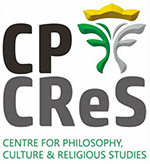Mata Bestari, Benak Meraki: Menuju Budaya Post-Visual
DOI:
https://doi.org/10.26593/mel.v38i1.7100Keywords:
image-narratification, vision, visuality, visual culture, digital age, cinema, educated eyes, beautiful mindsAbstract
The history of philosophy can be seen from a perspective as a story about the struggle between vision and visuality. In this space, at least during the Enlightenment period, seeing becomes one of the most decisive factors for knowing. ‘Seeing’ is no longer understood simply as a biological activity leading to knowing (“seeing is knowing”) but also a category and a catalog of knowledge (“seeing is believing”). Postmodernism shows that what actually happens is often exactly the opposite (“believing is seeing”). By starting with some kind of trust, people claim that they can see. There is a very close relationship and also a wide separation between seeing and knowing, that is, between the eye and the mind. However, in today’s cinematic society or visual and digital culture, the boundaries or bridges between the eye and the mind are becoming increasingly blurred. In this blurring of boundaries, the eye becomes simply a sort of camera machine: whatever is in front of it becomes a ‘prey’ and becomes something that is considered finished, and is threatened of being defined definitively and coldly. This is a challenge for philosophy. This article is an invitation to an awareness of the trend towards the fading boundaries, and simultaneously deals with the dangers of its unawareness. Insofar as one is aware of this tendency, can the bestari eyes (the educated eyes) and the meraki minds (the beautiful minds) be created.
Downloads
Published
Issue
Section
License
Copyright (c) 2023 Haryo Tejo Bawono

This work is licensed under a Creative Commons Attribution-NonCommercial 4.0 International License.
MELINTAS applies the Creative Commons Attribution (CC BY NC) license to articles and other works we publish. If you submit your paper for publication by MELINTAS, you agree to have the CC BY NC license applied to your work.


